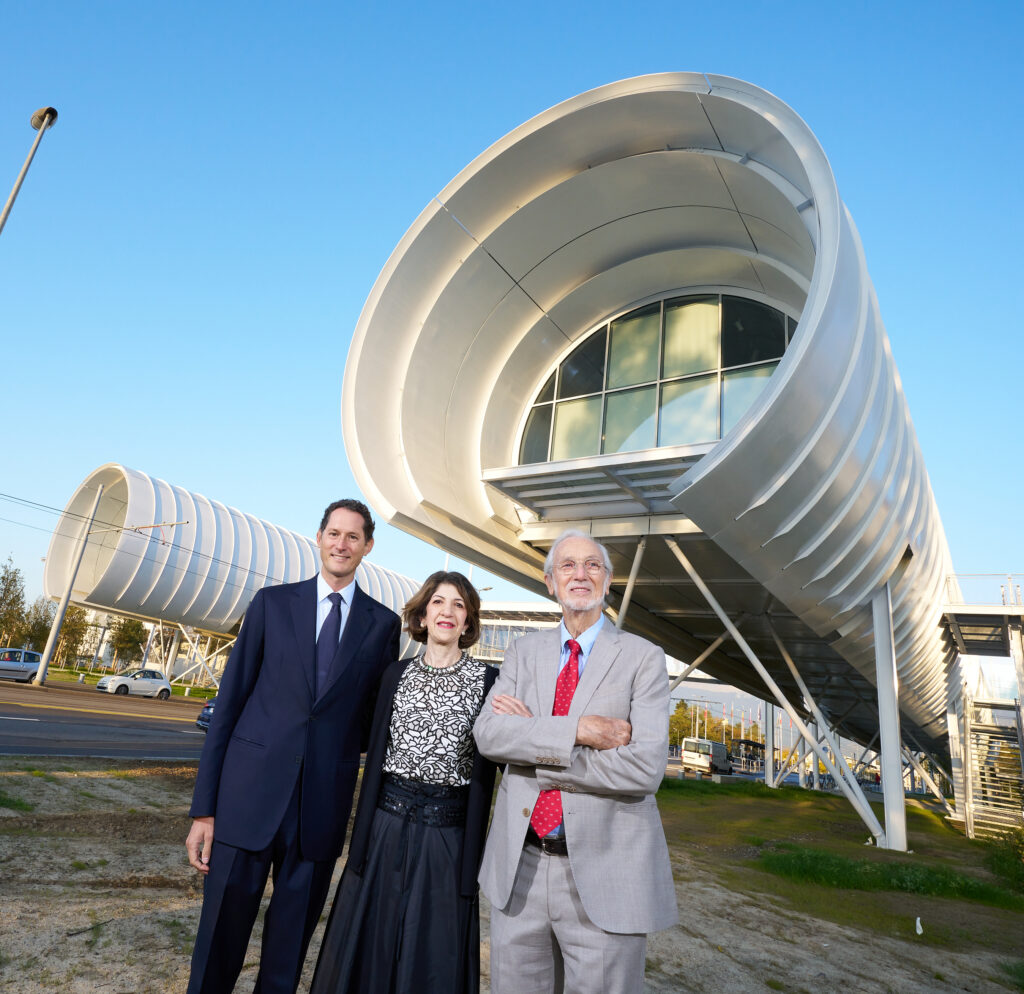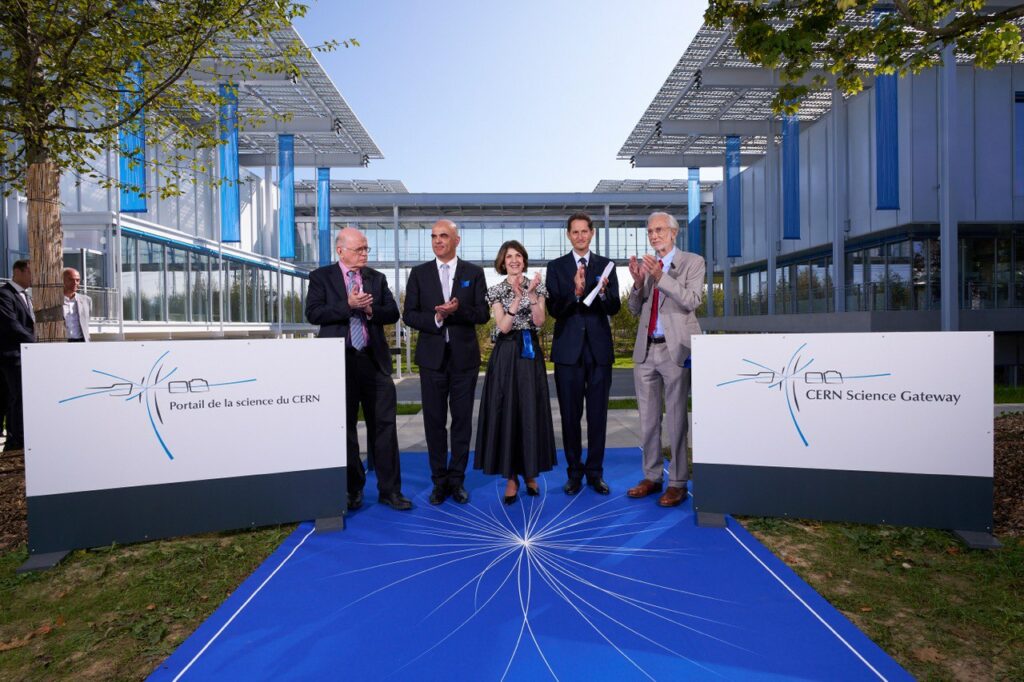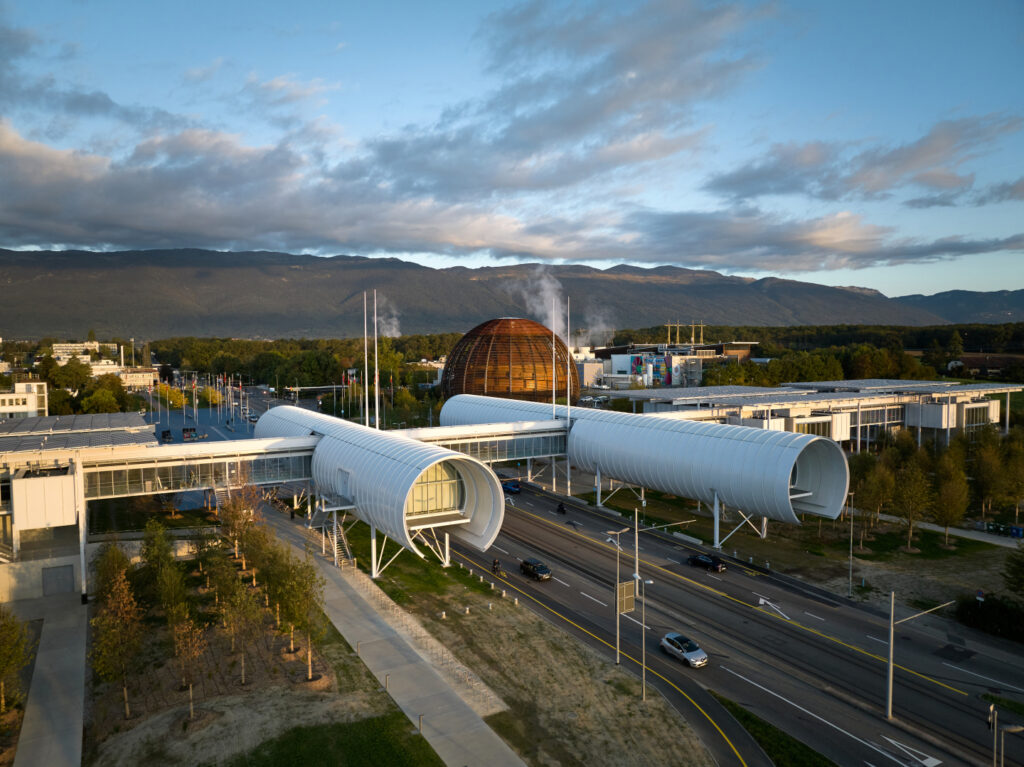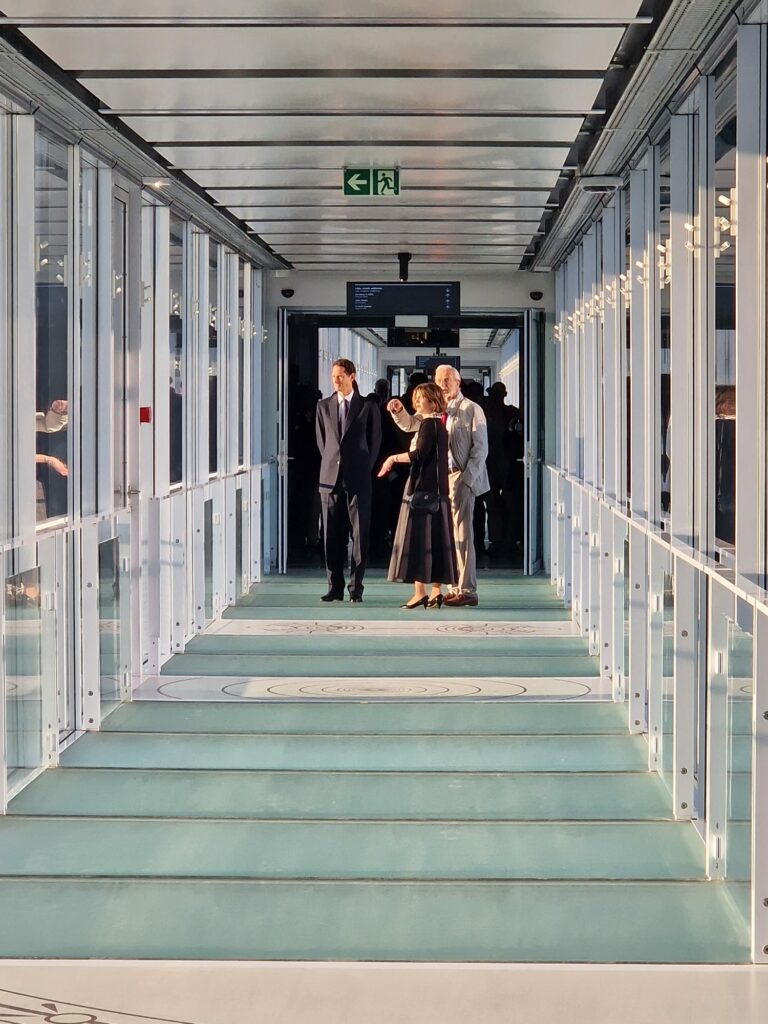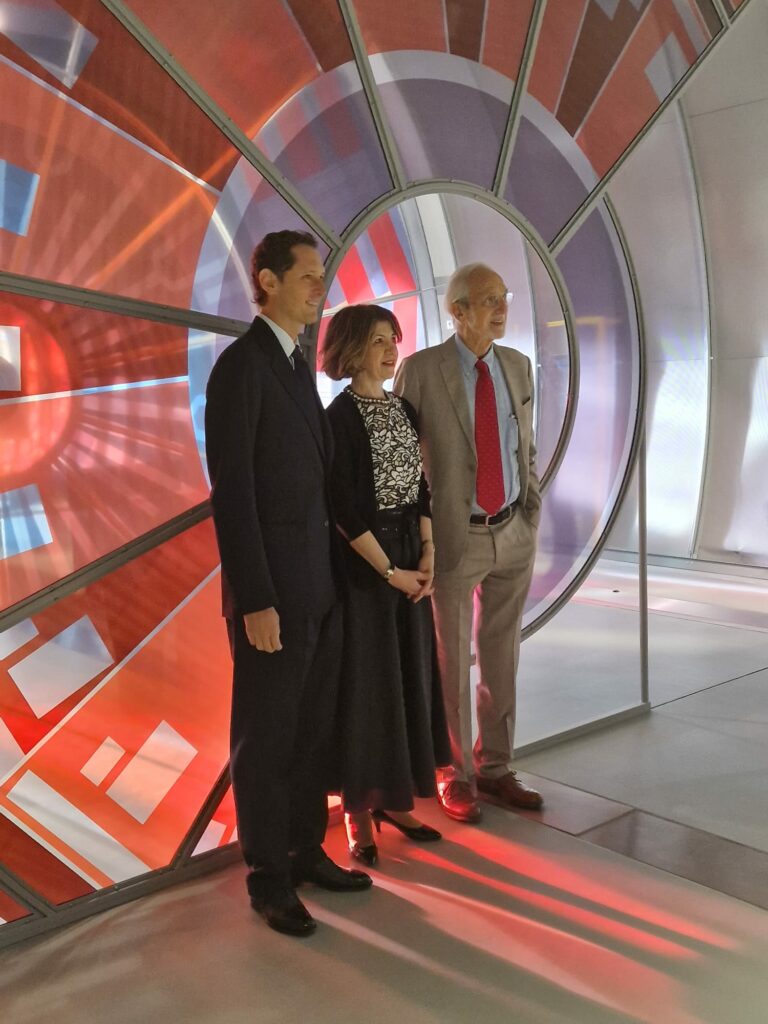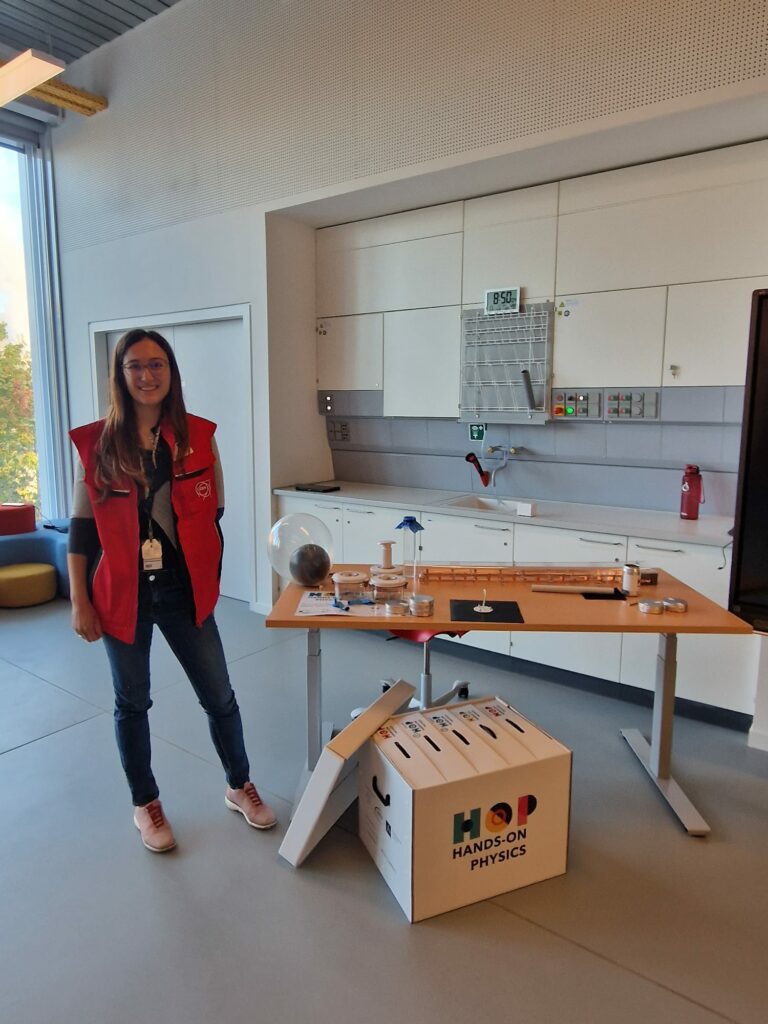On 7 October, CERN opened its new Science Gateway in Geneva, Switzerland: a new, cutting-edge hub meant to make science easier to understand and more approachable for anyone. During inauguration day, the new centre was presented to the President of the Swiss Confederation and to ministers and authorities from CERN’s member and associate member states, as well as to the donors who made the project possible and CERN’s partners in the fields of research, scientific education and culture. Designed by Renzo Piano Building Workshop, the new structure will open to the general public tomorrow, 8 October 2023, and is expected to welcome, every year, up to 500,000 visitors from all over the world, starting from the age of five. Open 6 days a week, from Tuesday to Sunday, Science Gateway will allow CERN to sharply increase the didactic and cultural activities it offers – and admission will be free.
The inaugural ceremony began with a speech by Fabiola Gianotti, Director-General at CERN, who stressed the social value of scientific education and culture. “Sharing CERN’s research and the beauty and utility of science with the public has always been a key objective and activity of CERN, and with Science Gateway, as of tomorrow, we can expand significantly this component of our mission. We want to show the importance of fundamental research and its applications to society, infuse everyone who comes here with curiosity and a passion for science, and inspire young people to take up careers in Science, Technology, Engineering and Mathematics (STEM),” she declared. “Science Gateway will be a place where scientists and the public can interact daily. For me, personally, Science Gateway is a dream that has become a reality and I am deeply grateful to all the people who have contributed, starting with our generous donors.”
CERN, the European Laboratory for Particle Physics, is where the Large Hadron Collider was installed: the largest and most powerful particle accelerator in the world. The new iconic building was inspired by the tube-like structure of CERN’s accelerators, and includes five areas for exhibitions, workshops, a modular auditorium that can be customised to different needs, a shop, and a restaurant. The transparent glass bridges and panels represent CERN’s commitment to fostering collaboration beyond borders and to embracing different cultures, opening up science to everyone.
Renzo Piano, who led the architectural project, stated, “This will be a place where people meet: kids, students, adults, teachers and scientists, everybody attracted by the exploration of the Universe, from the infinitely vast to the infinitely small. It is a bridge, in both a metaphorical and a real sense. This building is fed by the energy of the Sun, landed in the middle of a newly grown forest.” The highly iconic structure is indeed completely carbon neutral in terms of CO2 emissions, with close to 4,000 square metres of solar panels supplying more electricity than the entire building needs. Furthermore, over 400 trees were planted around the centre, which therefore rises in the middle of a living forest. While the project was launched in 2018, construction of the Science Gateway campus lasted just over two years, with the first stone laid on 21 June 2021.
The structure could not have been built without the generous support of Science Gateway’s sponsors, who share its values and will to promote education, science and culture, celebrating the positive impact they have on society. Science Gateway cost approximately 100 million Swiss francs overall, exclusively raised through donations. In particular, Stellantis Foundation was the project’s largest single donor with 45 million Swiss francs.
John Elkann, Chairman of Stellantis and of Fondazione Agnelli, declared, “CERN is an example of how we can work together in harmony, using scientific knowledge and ingenuity for the greater good. Stellantis Foundation is proud to partner with such an institution as it opens to the public the new Science Gateway, which also celebrates a great innovator like Sergio Marchionne. My family and I strongly believe in the power of education, which is the mission of Fondazione Agnelli: a commitment we reinforce today with conviction and passion. That’s why today, as the inauguration takes place, Fondazione Agnelli is also launching the HOP (Hands on Physics) project in collaboration with CERN and Italy’s National Institute of Nuclear Physics. The project will allow a number of classes in Italian junior secondary schools to carry out physics experiments in the classroom, led by their teachers after ad hoc training. The goal of the project is to encourage students to approach STEM subjects, sparking their curiosity and opening up for them highly rewarding job opportunities.”
Find out more about Science Gateway: www.sciencegateway.cern/it/project
Find out more about the HOP project: www.hopscuola.it

